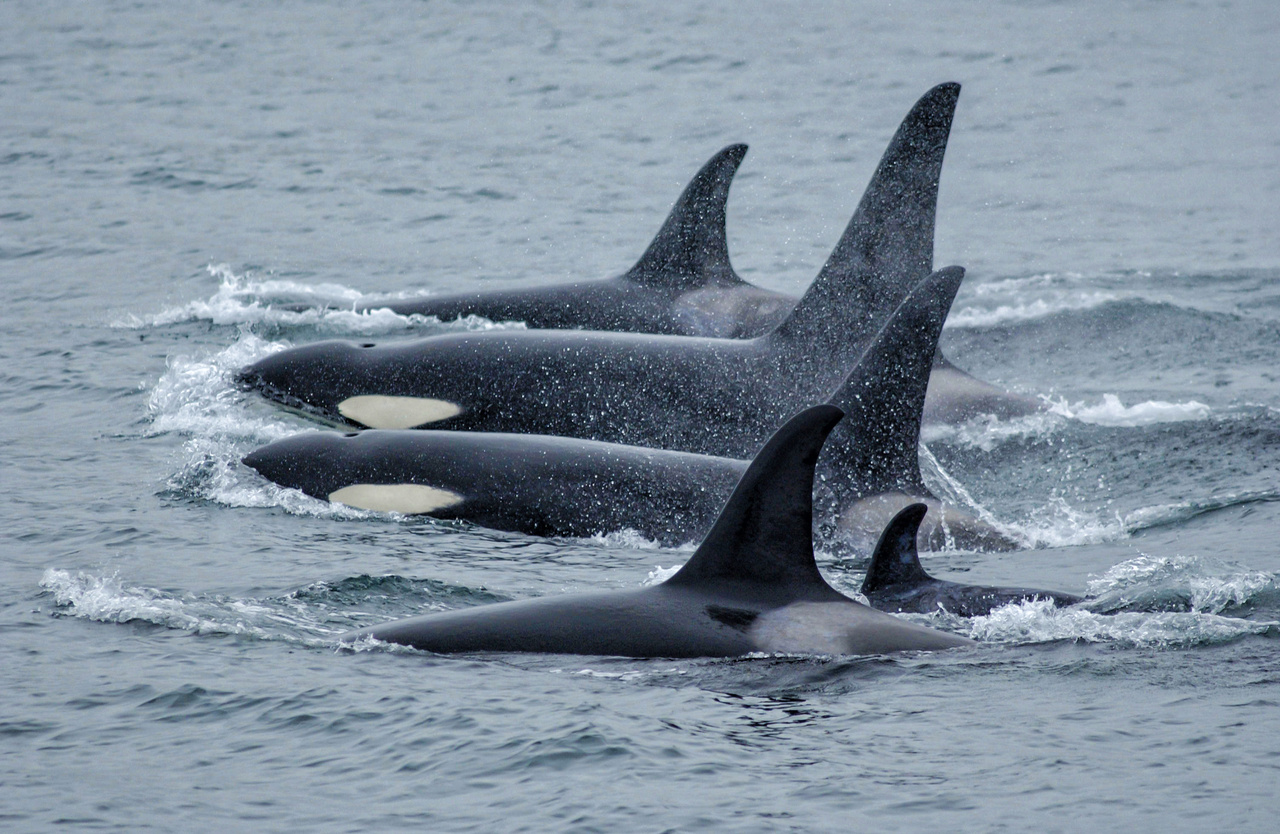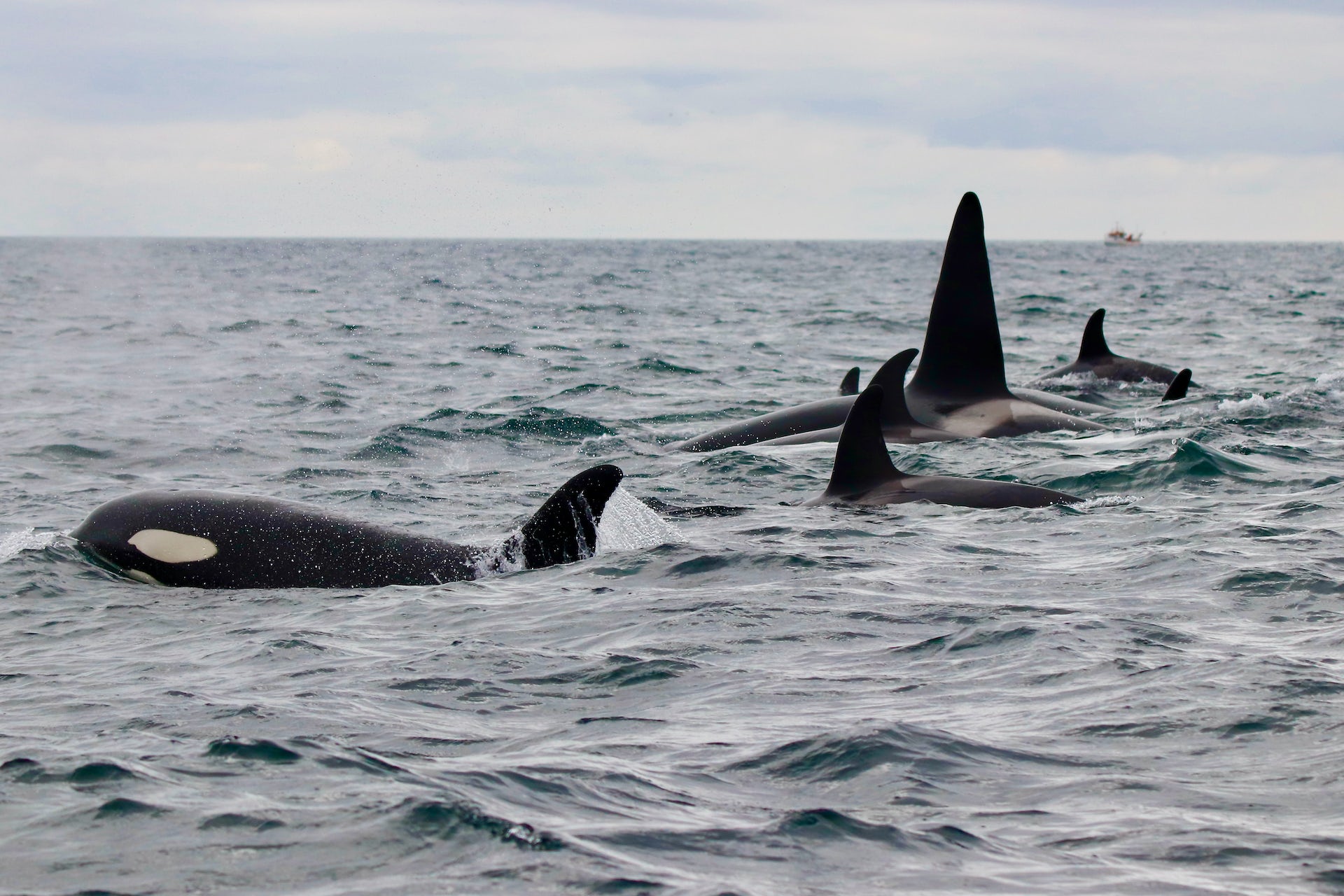Analyzing the fat of killer whales reveals what they eat
It can be hard to observe orca eating habits in remote parts of the Arctic.

Scientists are studying the diets of the oceans’ top predators as they change in response to their environments. This is because how much and what they eat can affect how ecosystems function.
And while researchers know that killer whales, also known as orcas, are the oceans’ apex predators, our understanding of their diet — particularly the quantity of each species they consume — remains incomplete.
This is especially true for remote populations that cannot be observed year-round.
But there’s now a way to recreate killer whales’ precise diets by using only a sample of their skin and fat. My research team developed a promising technique that reveals these wild predators’ diets across the North Atlantic Ocean.
Multiple feeding strategies
Killer whales are intelligent predators that are known to adopt specific hunting techniques, ranging from carousel feeding — cooperatively herding and then feeding on — herring, to cooperatively creating waves that can dislodge seals from ice floes. As a result, they can hunt nearly any species, from fish to fur seals to blue whales, throughout the world’s oceans.
Depending on their location and evolutionary history, different groups of killer whales have developed different ecotypes — unique diets and lifestyles. The most notorious ecotypes are the transient and resident killer whales in the Eastern North Pacific.
These ecotypes have been extensively studied for decades, as the killer whales inhabit densely populated areas, which allows scientists to observe these individuals year-round.
In these populations, scientists found evidence of “trophic cascades,” the effects of predator consumption on the rest of the food web. Killer whales had top-down effects on the density of kelp forests; the killer whales greatly reduced the sea otter population, which caused the sea urchins — the sea otters’ main food source — to proliferate and decimate the kelp forests.

North Atlantic mystery
Comparing different groups of killer whales around the world reveals that there is still a lot we don’t know about them. Figuring out what killer whales living in remote parts of the Arctic eat, like in Baffin Bay, Greenland and Arctic Norway, is challenging. Observation of feeding events can be difficult in the unstable waters of the Arctic Ocean.
Initial studies suggested there were two types of killer whales in the North Atlantic: those that prey on marine mammals, and the other group that eats fish and occasionally seals. However, the lack of data, combined with emerging evidence has led to scientists proposing to retire this classification. It appears that there is a more diverse range of diets in some North Atlantic populations.
Due to the challenge of collecting observation data, researchers have focused their efforts on the chemical signals they can measure inside the killer whales’ skin and blubber. These chemical signals can consist of lipids or stable isotopes which tell us what the whales eat and how they impact the food chain.
Our technique measures the lipid composition in the whale’s fat, and uses a computer program to recreate the most probable proportion of each prey species to an individual’s diet.
All that is required are multiple lipid “signatures” — that represent the proportion of each fatty acid in the whale’s blubber — from the killer whales and from their potential prey.
Fat studies
Our open-access research, recently published in the Journal of Animal Ecology, used a technique called quantitative fatty acid signature analysis to reveal the diets of nearly 200 North Atlantic killer whales.
We also measured lipid compositions in over 900 prey samples. The results showed a range of feeding strategies across the ocean. In the western part of the North Atlantic, killer whales ate mainly other whales (like large baleen whales, belugas and narwhals); killer whales in Greenland preferred seals and in Norway, they showed a preference for fish like herring.
Using this technique, scientists can now estimate the exact percentage of different species in each whale’s diets. But what surprised us the most was the level of variation between individual diets within each population.
In the western North Atlantic, individuals focus either on cetaceans — marine mammals like belugas and narwhals — or seals. In the mid-North Atlantic, killer whales would feed on all available prey. And for the most part, eastern North Atlantic killer whales seem to keep to a diet rich in fish. Several individual killer whales in Norway and Iceland supplement fish with marine mammals.
Our study is the first and largest of its kind on killer whales, and our findings encourage us to further investigate killer whale diets at the individual scale. We now know that individuals within the same populations can have different diets.
This not only translates to different contaminant exposures and health risks for these top predators, but also represents different feeding strategies throughout the Arctic Ocean.
This approach allows us to measure future shifts in these predators’ diets and understand how they may impact Arctic food webs. Because of climate change, killer whales are progressively moving further into the Arctic.
Their presence and a potential increase in consumption of Arctic species could change the ecosystem dynamics in the North. Further research using this technique on samples collected over an extensive period could allow researchers to detect shifts in the whales’ diets and ecosystem.
Anaïs Remili is a Ph.D. Candidate in renewable resources at McGill University.
This article is republished from The Conversation under a Creative Commons license. Read the original article.
This article has been fact-checked by Arctic Today and Polar Research and Policy Initiative, with the support of the EMIF managed by the Calouste Gulbenkian Foundation.
Disclaimer: The sole responsibility for any content supported by the European Media and Information Fund lies with the author(s) and it may not necessarily reflect the positions of the EMIF and the Fund Partners, the Calouste Gulbenkian Foundation and the European University Institute.
